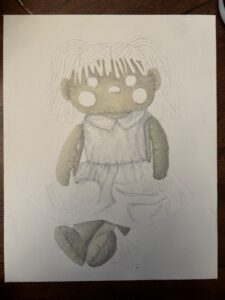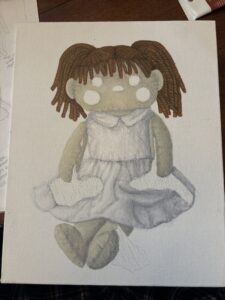Following the Crayon Brick Road
Hello everyone and welcome to my fifth blog post! This week, I shifted from looking at media to looking at colors. I read an article that describes a study where they had an adolescent girl who self-harmed do ten different art therapy activities to see their effects. One of the most helpful activities was coloring a mandala whenever the urge to self-harm arose. This can serve as a distraction from self-harm and allow the individual to focus on the present moment, similar to the effects of meditation.
Another activity was called “My Home.” The girl had to show which emotions were present in her household by coloring a house template using crayons. Each color would represent different emotions: black symbolizes sadness, brown symbolizes fear, purple symbolizes safety, etc. When asked about her house’s emotions verbally before the activity, the girl said she didn’t know where to start or how to describe them. After coloring the house, she was able to open up about her family struggles which may help find the underlying contributors to her self-harm.
In my discussion with my mentor this week, we talked about why art therapy can be beneficial and how simply coloring a house template helped the girl open up. She mentioned how picking colors can activate different parts of the brain. Talk therapy may block certain pathways that art therapy can help bypass. So in the “My Home” activity, picking the colors for her house helped bypass the pathways that may have been blocked by talk therapy, allowing her to break down and process the emotions present in her household.
My painting of the doll representing the overwhelming function of self-harm is also taking on some color! So far, I have painted in the base colors for the doll’s body, hair, and dress. I would first color the whole section with one block color and then add shadows and highlights afterwards. The shadows are the block color mixed with paynes gray and the highlights are the block color mixed with white. I went with very neutral colors (brown, tan, gray, white) to ensure that the color flowing out of the doll would really pop and not be muddled with the rest of the painting. Next week, I hope to finish the base colors for my whole painting and possibly start adding some details! Stay tuned!







Comments:
All viewpoints are welcome but profane, threatening, disrespectful, or harassing comments will not be tolerated and are subject to moderation up to, and including, full deletion.